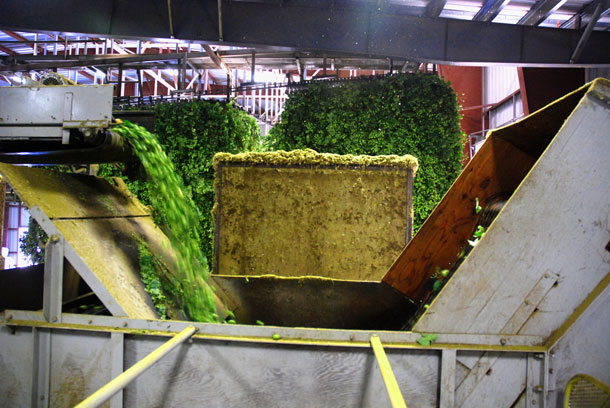MONDAY BEER LINKS, LIMITIED MUSING 04.06.15
Loving Local Beer.
Brewers Association economist Bart Watson writes: “Typically, I cite studies that suggest the flavor/variety dimension as the primary driver, with local taking an important, albeit secondary role. But there is increasing evidence that local may be rivaling flavor as a motivating factor for craft beer buyers.” And he cites figures from a Nielsen survey that indicate that local is more important for beer drinkers than wine drinkers, and that this is more pronounced for younger drinkers (that makes it an important Trend with a capital T).
Before reflecting on the sea change this represents, Watson suggests the beer/wine part shouldn’t be surprising, given that two thirds of the wineries in the United States are located in three West Coast states. But that’s two thirds of more than 8,000 wineries; there are more than 100 wineries in each of ten states beyond California, Washington and Oregon. There might be another reason that beer does better on the “buy local” front. Either there some stronger connections local brewers are making with consumers or they have done a better job convincing drinkers what they are serving is as good as the drink from elsewhere (the cachet of French and California grapes cannot be discounted). Or both. Probably both. [Via Brewers Association}
Origins of #craftbeer = desire for variety.
Success of #craftbeer = delivery of variety.
Future of #craftbeer = more variety.
— Lew Bryson (@lewbryson) April 4, 2015
Local and variety work well together. [Via Twitter]
Why People are Still Mad at 10 Barrel, Why That’s OK, and Why It’s Also OK to Still Drink Their Beer.
The headline pretty much summarizes what the post is about. But consider this thought that I’ve seen written many times before: “Craft beer culture is not like tech start-up culture or fashion culture, or any of the other businesses where start-ups are expected to work to build something worth being acquired by a larger corporate entity. There are a lot of reasons for that—enough to fill a book—but I think the biggest ones are that American craft beer culture has always defined itself as a group of outsiders.” I’m not sure how that works when these beers constitute 20 percent of the market. [Via Willamette Weekly]
Good things in small packages?
Back in 2007 when The Session began part of the idea was that posts would include, but not be limited to, conversation about specific beers, what some would calling drinking notes or tasting notes. Friday was the 98th gathering of The Session — pretty amazing, but you’ll also notice a host is needed for May — and you’ll not find many drinking notes these days. But you can always count on The Beer Nut for notes done well. [Via The Beer Nut]
The Impending Death of the Beer Festival (as we know it).
Ryan Hannigan worries about the “massive influx of corporate-style beer fests” in Colorado. And that, “Essentially, it’s the suburbanization of beer festivals. Every one looks and feels the same.” [Via Focus on the Beer]
The Wit and Wisdom of Shaun Hill.
Shaun Hill is not simply a brewing savant; lots of interesting stuff in these outtakes gathered reporting another story. But this bothers me:
“The thing is now—with this modern light-speed dissemination of information with the Internet—is that nobody wants to just learn something for themselves. They want you to tell them. ‘What’s going to happen if I do this, this, and this?’ My response is always, ‘I don’t know. Let me know.’ The only time I really discuss that stuff is with friends like Chad Yakobson from Crooked Stave, Gabe Fletcher at Anchorage, or John Kimmich. Friends. We’re working off each other. It’s a give and take. It’s not just a take. If you have something to give me, yeah, I’ll share with you.”
There’s much truth there. The best way to find out what might result when you add x ingredient or try y process is to actually do it. That’s called learning. And part of being smart about brewing is understanding that not everything happens exactly the same way in every brewery. But whatever it is you are particularly liking in the beers you are drinking today — aromas that result from dry hopping, flavors the result from understanding the critters inside barrels, even the subtle cracker-like texture of a spot-on pale lager — there’s every chance that the brewer who made that beer learned a few things directly from another brewer. Or to put it another way, the second brewed shared something with the first without considering the quid pro quo. [Via Boston Magazine]
CAMRA – Heading for a High Wall?
A view from the inside. ([Via Tandleman’s Beer Blog]
 Host Nathan Pierce has asked contributors to write about
Host Nathan Pierce has asked contributors to write about 